The Audi A6 and BMW 5 Series have been close competitors for decades.
Along with the Mercedes E-Class, the Audi A6 and BMW 5 Series are ideal if you want a spacious, high-tech car with the refinement and power to impress your passengers. These cars are built to sit at high speed on the German autobahns for hours on end, as well as looking suave and sophisticated when parked. But which is best?
The first half of this article compares new A6 and 5 Series models. If you want to see how the previous-generation models compare, jump to this section of the page.
Audi A6 vs BMW 5 Series compared
| Audi A6 | BMW 5 Series |
Pros:
| Pros:
|
Cons:
| Cons:
|
Styling
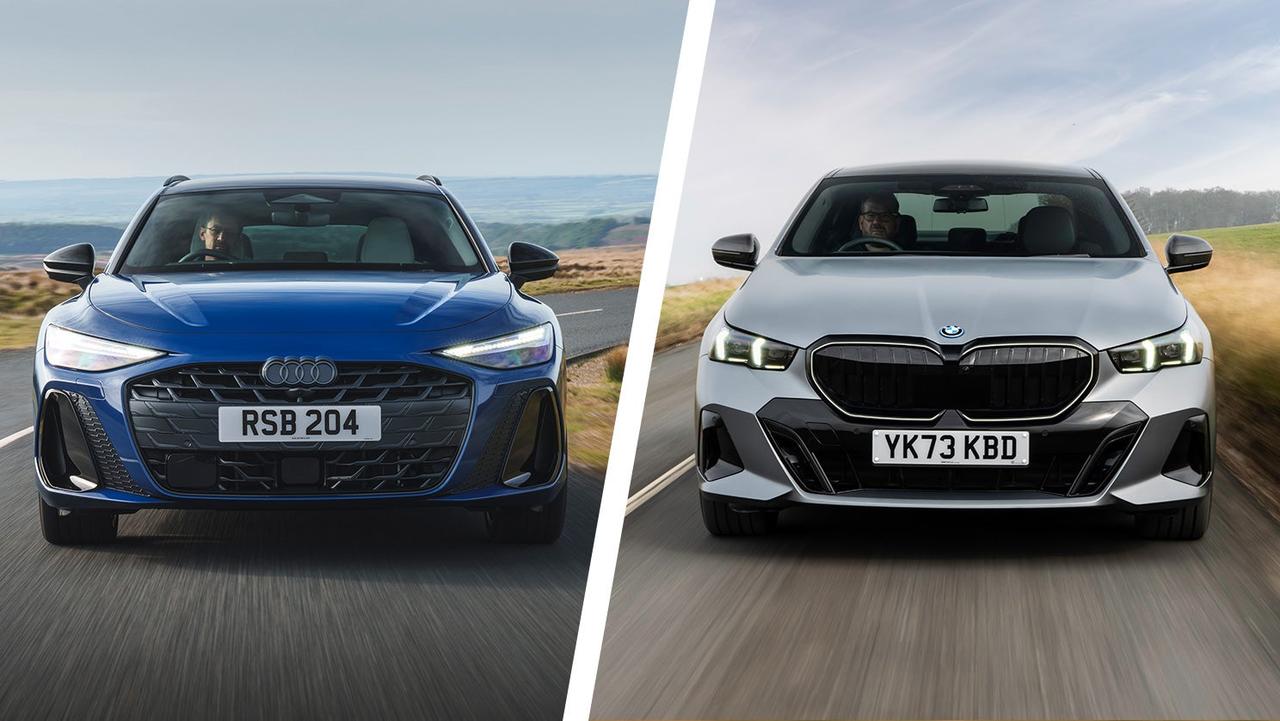
The A6 has become sleeker in this generation, which should benefit efficiency and refinement as it slips through the air like a greased eel. Slim LED daytime running lights make the car look futuristic, and draw your eyes away from the real headlight units further down.
There are actually two completely different A6 models – the engine-powered one we’re focusing on here, and an A6 e-tron that’s fully electric and sits on a completely different platform. They both share styling cues – you’ll spot the e-tron for its blank body-coloured grille and specific badges.
The 5 Series is a bit more traditional-looking, with a more conventional three-box saloon shape. There’s not such a big reinvention here – the 5 Series is recognisable, even if it looks more menacing (and a little more bloated) than before.
Both are available in sporty-looking trims with big wheels and more intricate bumper designs – S Line for the Audi and M Sport for the BMW.
Interior
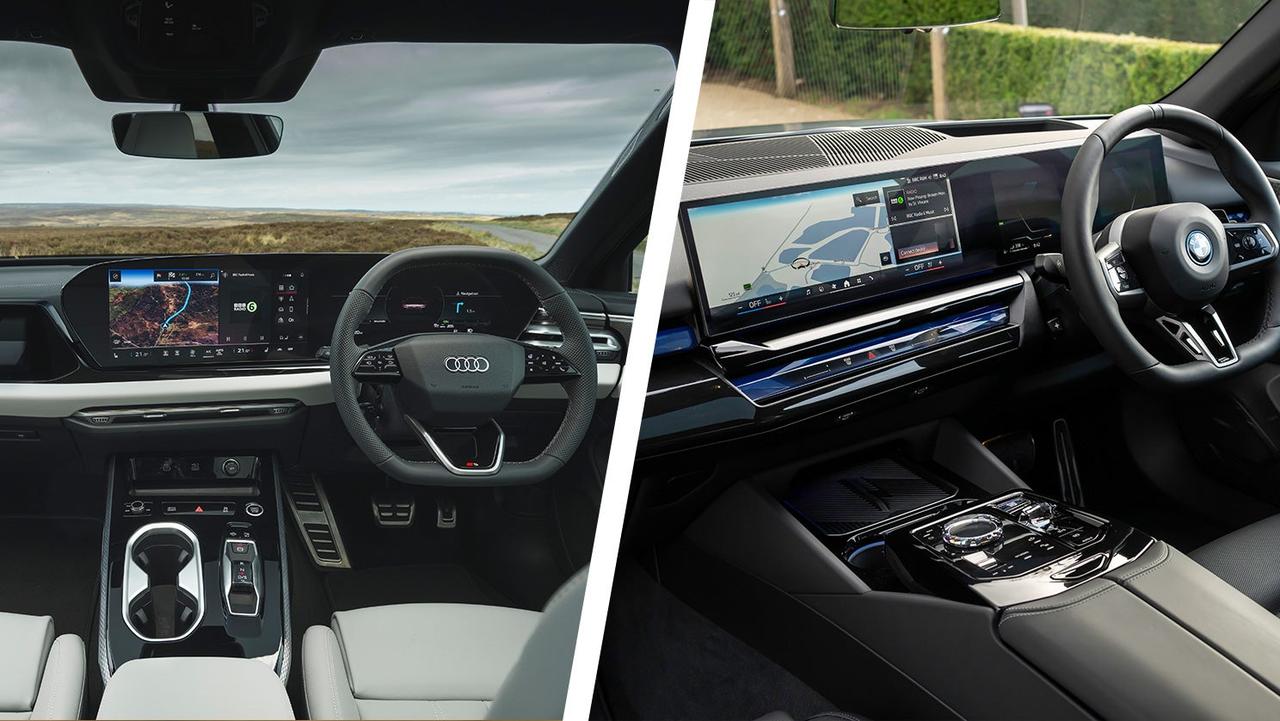
Both of these cars are tech-heavy and feel like extensions of your office – the two screens on top of the dash are almost computer monitor-sized. In both cars, the tech responds quicker to your inputs than any Windows software, and there’s probably just as much functionality in these in-car computers as in your laptop.
You’ll get the best out of both the Audi’s and BMW’s screens if you spend a little bit of time sat on your driveway playing around with them. Which is a diplomatic way of saying they’re confusing to the uninitiated – more so than the previous 5 Series and A6, which we’ll go into more detail on further down the page.
Dimensions and practicality
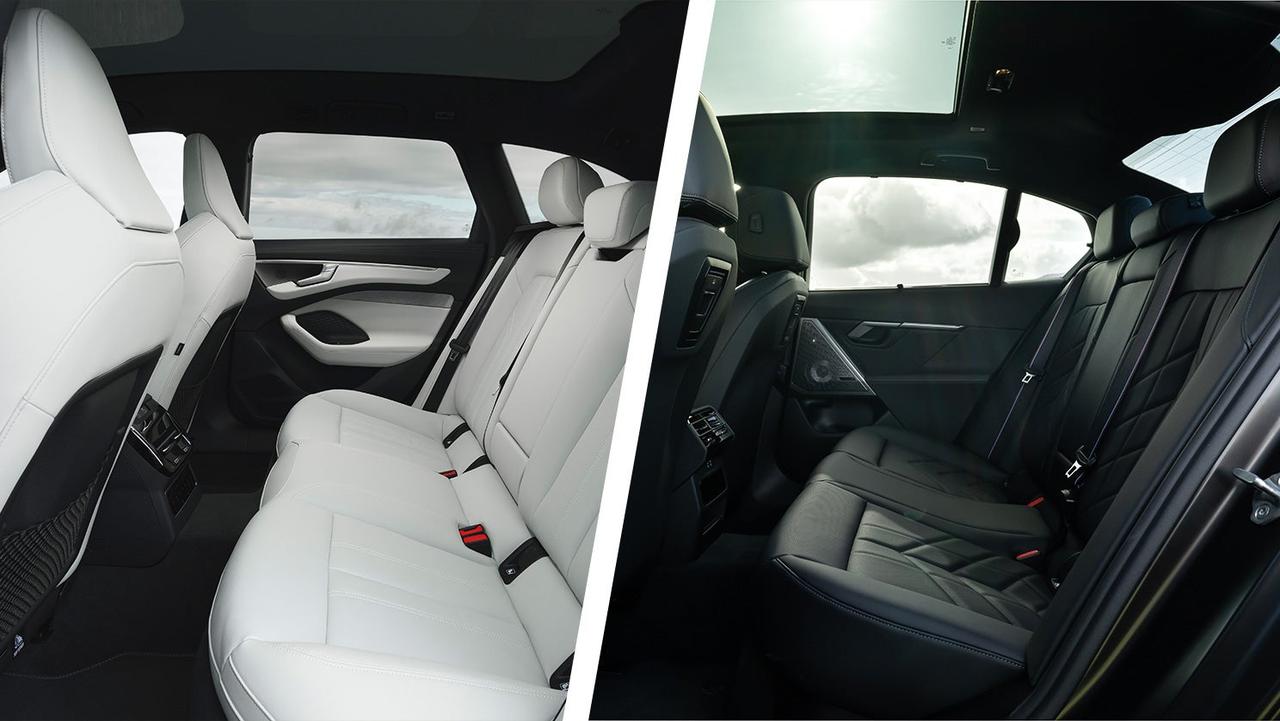
| Audi A6 (Avant) | BMW 5 Series | |
| Length | 4,990mm | 5,060mm |
| Height | 1,640mm | 1,515mm |
| Width (exc mirrors) | 1,880mm | 1,900mm |
| Boot space (seats up) | 503 litres | 520 litres |
Audi’s decision to make the new A6 a bit sleeker than previous models has impacted practicality – it’s not quite as useful as the last-shape car. But Audi points to its SUV range, and says that buyers who need lots of space typically opt for the Q5 or Q7.
That means the 503-litre boot in the A6 Avant estate isn’t particularly generous for a five-metre-long car, but it should be plenty for most families. The 5 Series Touring estate offers 570 litres – 50 more than the 5 saloon – but no ability to open the rear window separate from the rest of the tailgate anymore.
Neither car quite has the limousine levels of rear legroom you’d expect from such large vehicles but, again, the majority of people will find there to be enough space in both the A6 and 5 Series.
Both of these cars are longer than an average UK parking space – so it’s handy that both come with self-parking assistance as standard.
Engines
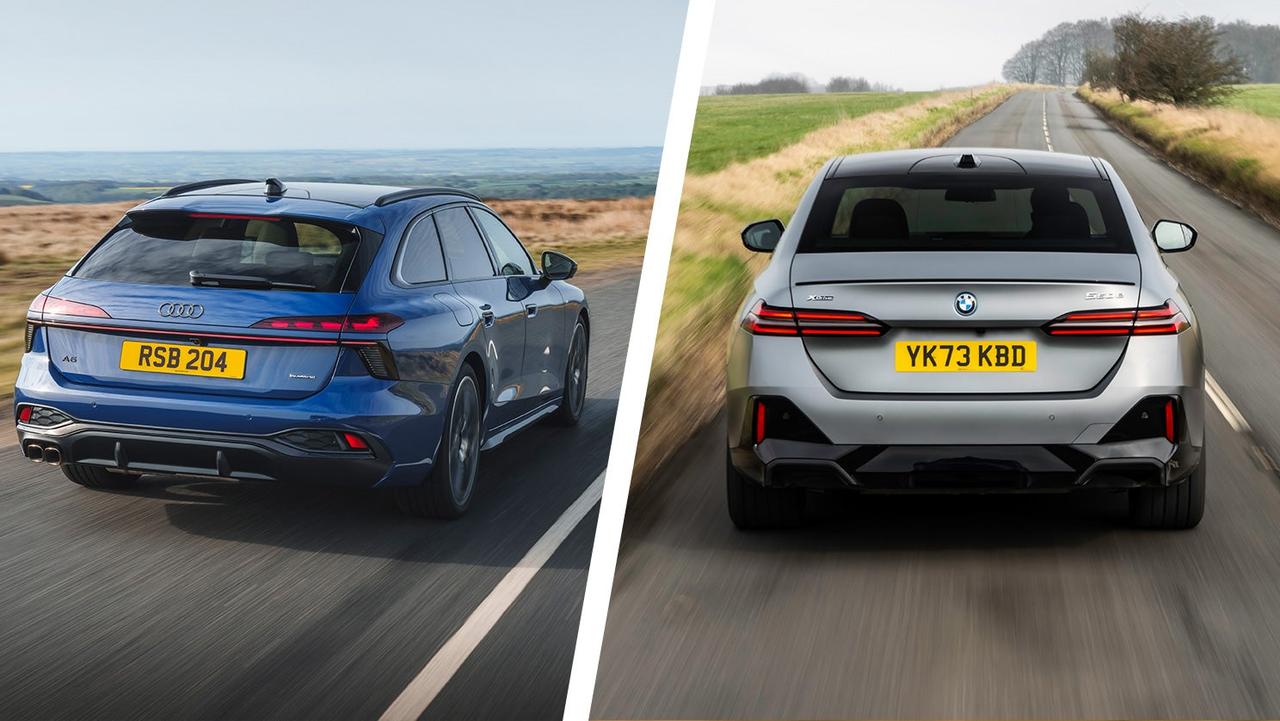
The big news for the 5 Series is that you can’t get diesel engines any more – a surprising change for a car that’s built to go long distances. In fact, there’s only one petrol engine, too. The bulk of the range is made up with plug-in-hybrid engines, which are capable of over 50 miles of pure-electric running. In the right circumstances, that could give similar or better fuel efficiency than a diesel engine. The PHEVs are big sellers in the UK because of favourable company-car tax rates versus non-plug-in cars.
After launching with just petrol and diesel engines, the A6 now comes with a plug-in-hybrid powertrain. This is said to manage over 60 miles of electric driving to a charge, which could make it marginally more efficient than the 5 Series over the same journey.
There are fully electric versions of both these cars – the A6 e-tron and the i5. The A6 is more aerodynamic and has a bigger battery, meaning it gulfs the i5’s best-case range figure – up to 464 miles for the rangiest A6 e-tron, versus 382 for the i5.
Value
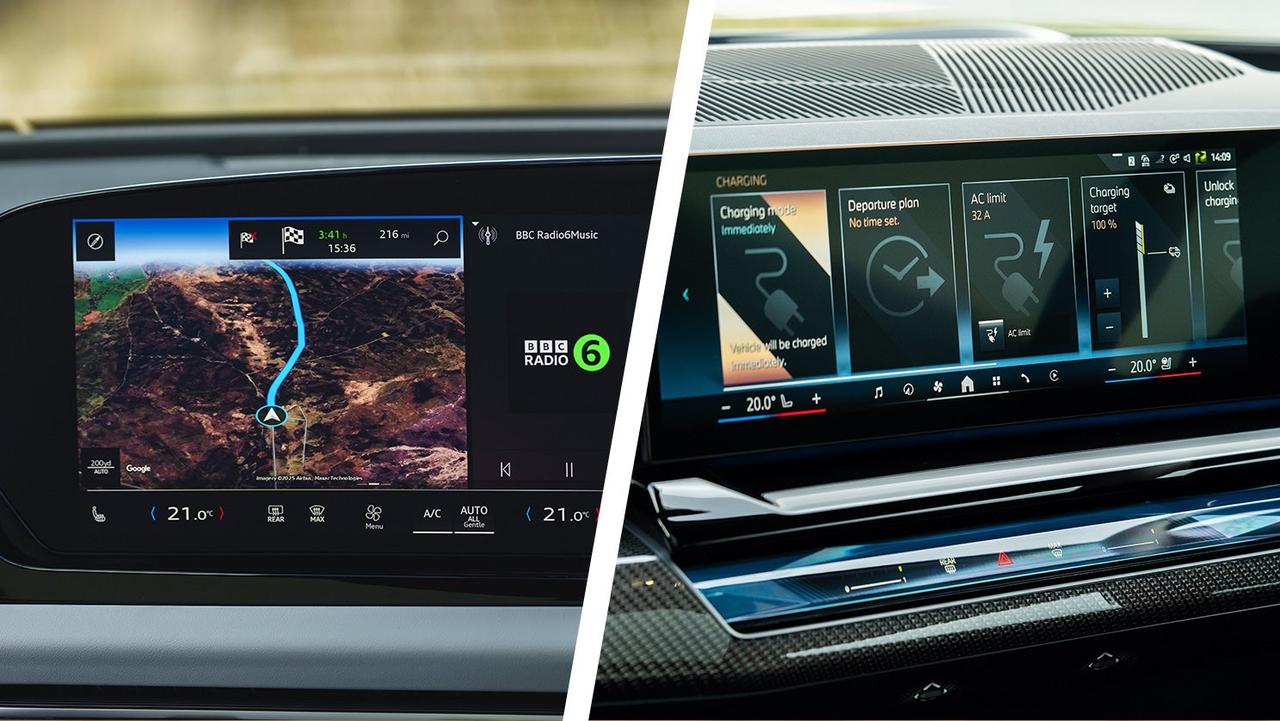
There’s little in it if you’re buying these cars new. A BMW 520i M Sport and Audi A6 TFSI S Line are only about £1,000 apart – which isn’t much when you’re spending over £52,000. You can save yourself about £3,000 by speccing the Sport trim instead of the S Line on Audi’s configurator, whereas the 5 Series only comes in the high-spec M Sport trim in the UK.
It’s a bit too early to see how the new A6 is performing on the used market, but a nearly new 5 Series can already be found with around £10,000 off the list price. And the drop is especially steep for the electric i5, which starts at around £80,000 but quickly drops to around £40,000 – roughly the same price as a petrol one.
Used Audi A6 vs used BMW 5 Series
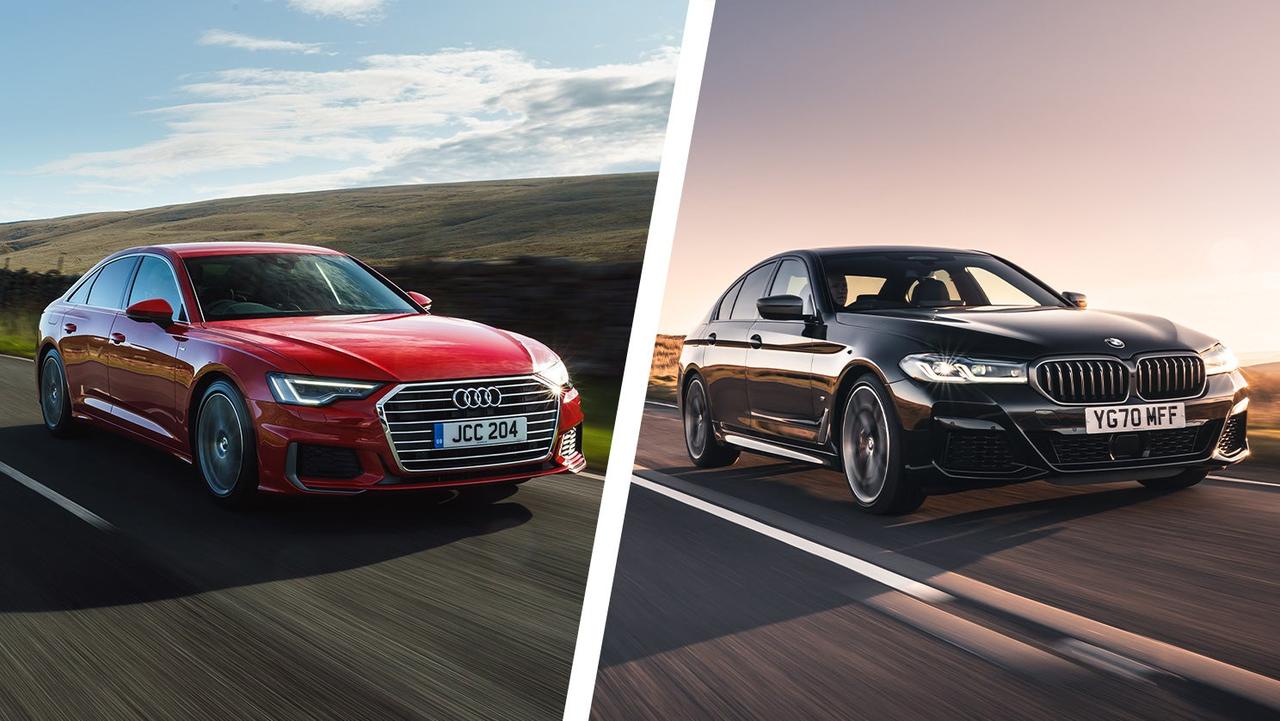
The 2018-2025 Audi A6 has a more upright, more geometric look than the car that replaced it. It’s still typically Audi, with strong body creases and intricate detailing. The interior is a superb blend of tactility and digital tech, and there’s plenty of interior room and boot space.
Meanwhile, the 2017-2024 BMW 5 Series is prettier and more lithe than its successor. Better to drive, too, and with a more intuitive interior.
Both of these cars make a huge amount of sense if you want a luxurious cruiser – more so than the new models, which are more expensive and more technological but more frustrating with it. Consider the savings you can pick up on these models versus what a new model costs, and it’s a no brainer to pick the old-shape car – a lot of the hardware is identical.
In terms of a used A6 vs used 5 Series, the 5 Series is a little better to drive – both in terms of handling and comfort. The A6, to our eyes, has the more upmarket-looking interior and marginally better high-speed refinement, while both are excellent if you’ve got lots of stuff to transport.
Which is best?
We’ve spent a lot of time with the new 5 Series, and not so much time with the new A6. But in our short time with the A6, it’s felt more luxurious inside than the 5 Series, and the tech it offers is slightly more user-friendly. The 5 Series simply isn’t as good as its predecessor – which admittedly was a very high bar, and one of our favourite cars we’ve tested in recent years.
So our comparison of the new A6 and new 5 Series has a slightly farcical ending. You’ll be best off in the 2017-2024 5 Series.
Read our 2017-2024 BMW 5 Series review, our 2024-on 5 Series review, and our 2018-2025 Audi A6 review for more information on these excellent executive cars. Or read our guide to the best motorway cars to buy this year.



































